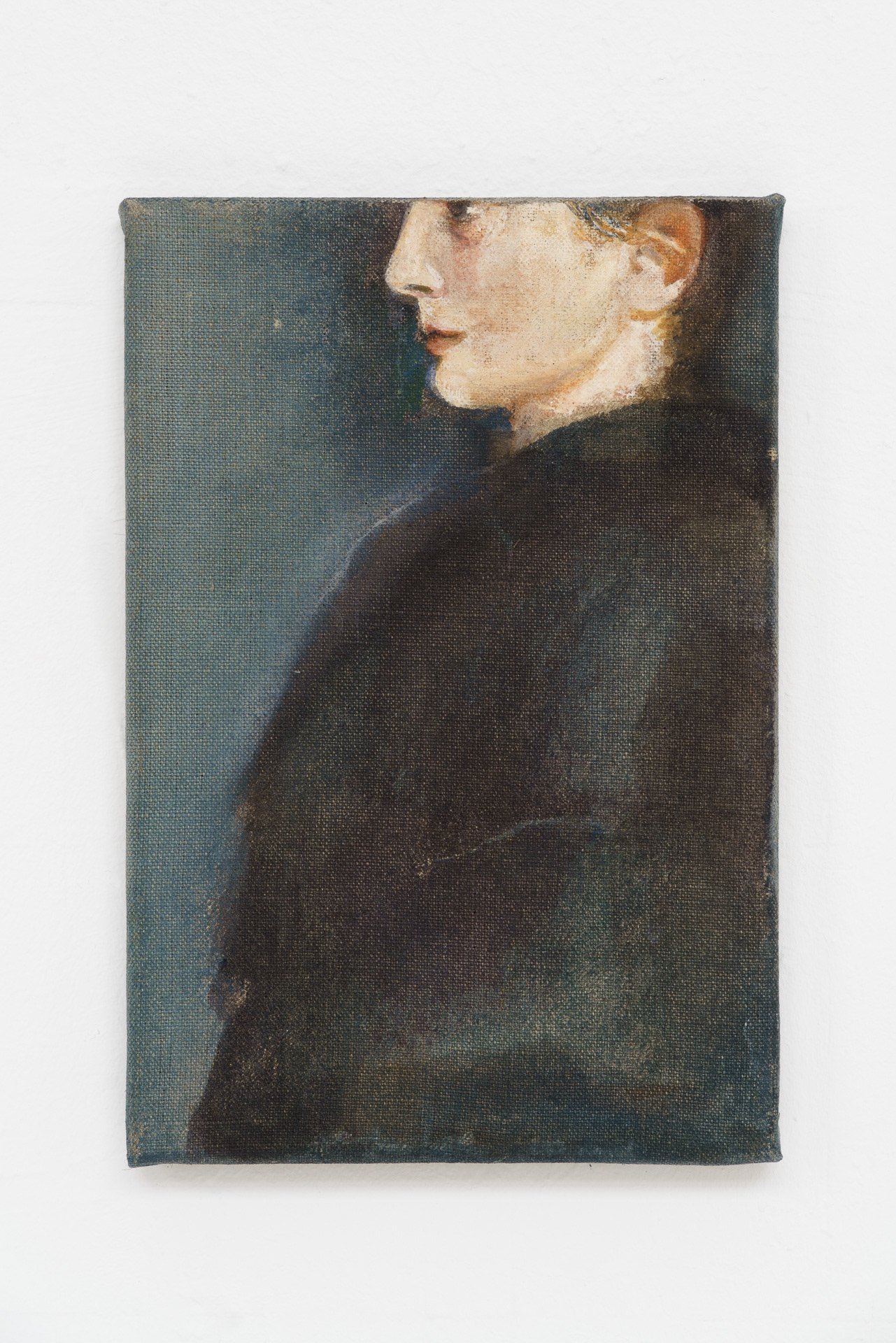On the occasion of Cécile Lempert's exhibition debut in Paris in 2023, the artist agreed to answer a series of questions.
In this interview, Cécile Lempert talks about what she wants to materialise and capture
through her pictorial work, characterised in particular by its rectangular and narrow format, and by compositions split in two, juxtaposing two scenes, or by a tight framing on the face. The artist also describes her creative process and her main artistic references.
through her pictorial work, characterised in particular by its rectangular and narrow format, and by compositions split in two, juxtaposing two scenes, or by a tight framing on the face. The artist also describes her creative process and her main artistic references.
" I came across the title when I was looking through my collection of images, which I use as source material for painting, and discovered some pictures in which the figures seem to emerge from the darkness, a kind of "lost picture" that only appears when the picture is heavily processed and brightened. The mood in the pictures fascinated me and while researching night pictures I found the art-historical term "Nachtstücke" (night pieces) as a term for paintings of nocturnal landscapes as well as the "Nachstücke", the collection of stories by E.T.A. Hoffmann." explains Cécile Lempert.
Cécile Lempert is a German painter born in Dortmund in 1994. She now lives and works in Cologne. She studied at the Kunstakademie in Düsseldorf under Prof. Peter Piller and Stefan Kürten, graduating in 2021. Since then, the artist’s work has been the subject of several solo exhibitions in Germany, the United-States, China and South Korea. These include exhibitions at CASTLE (Los Angeles), IAH (Seoul) ; Super Super Markt (Berlin), Leo Gallery (Shanghai), Braunsfelder (Cologne).
Cécile Lempert’s work has also been presented at several international art fairs: Material fair, Mexico (2025), Art Cologne (2023) and June Art Fair, Basel (2023).
Cécile Lempert’s work has also been presented at several international art fairs: Material fair, Mexico (2025), Art Cologne (2023) and June Art Fair, Basel (2023).
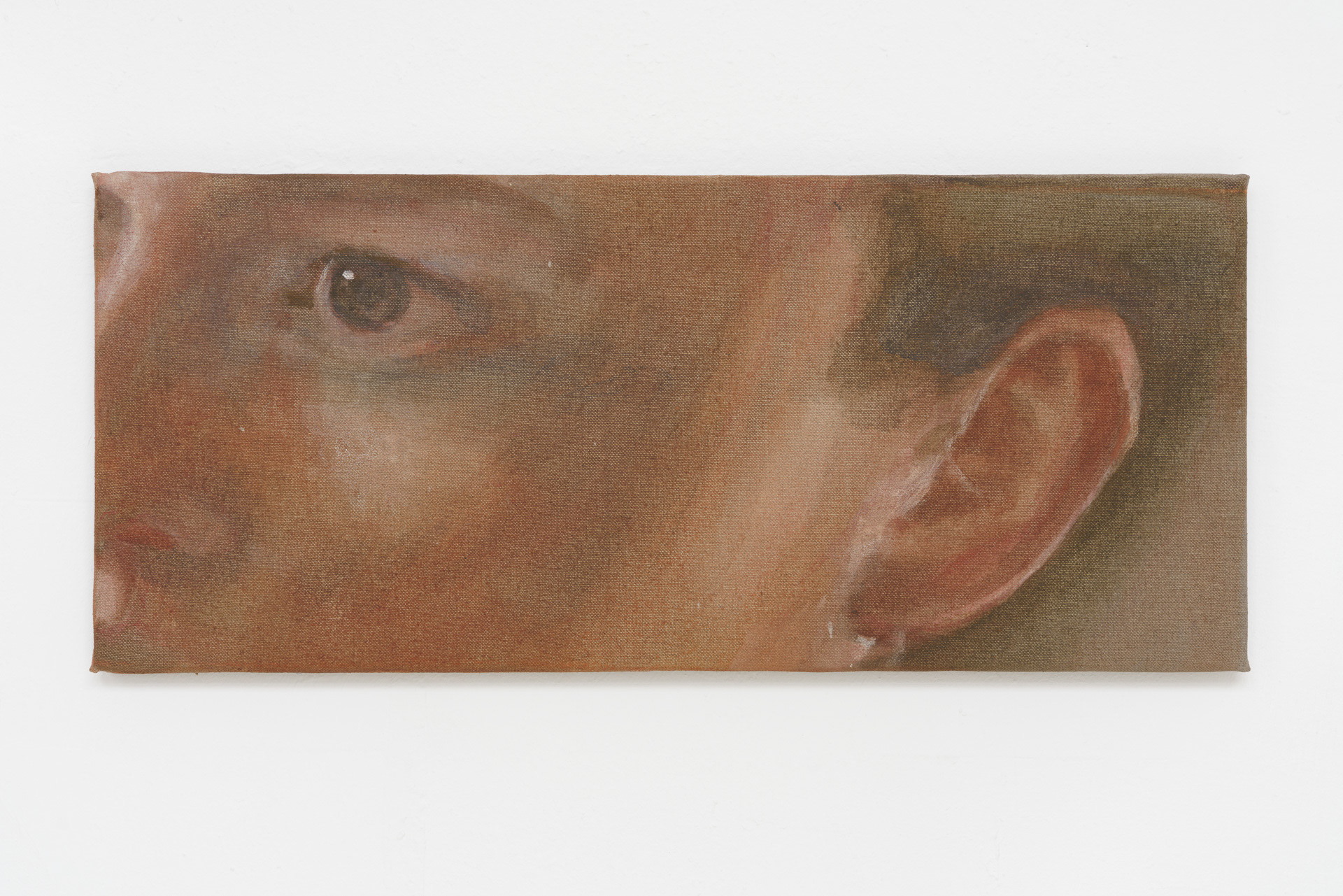
Nachtstück, 2023, distemper on canvas, 30 x 70 cm / Image by Jana Buch
"The image duplication, in turn, is very reminiscent of work steps from editing programmes, i.e. the precise observation of image sequences. This creates a degree of movement in a static picture that goes beyond the conventional approach of painting, which uses composition or gesture to create movement in the picture."
Cécile Lempert
Elsa Meunier : Could you introduce yourself ?
Cécile Lempert : I always drew a lot as a child. At some point as a teenager, I used it as a means of observing my surroundings and often documented journeys. I remember a bus trip in Rome, for example. I sat there with a small sketchbook and drew the sights as I travelled past. At some point, I had the whole bus behind my shoulder looking at my paper.
I didn't draw many people spontaneously back then, although it has always fascinated me the most. It wasn't until I was preparing my application portfolio that I started asking people to model for me. This intensified during the first part of my studies at the Düsseldorfer Kunstakademie, initially in the form of an intensive self-portrait phase, after which I mainly painted people from my immediate surroundings. However, the strong, one-sided relationship of dependency that developed from this really bothered me after a while. I began to project video snippets that lasted a few seconds in a loop next to my canvas and to paint from them in order to create the suggestion of human presence and the excessive demands of constant movement, but at the same time to be independent of other people's schedules. During this time I also worked with editing programmes from time to time. This is perhaps the beginning of my interest in image duplication, which has appeared so often in my work recently.
E.M : Your work has the particularity of blossoming on large and often narrow surfaces: often rectangular in shape, like panels or screens. These are often split in two, doubling the motif or juxtaposing two fully autonomous compositions, like sequences following one another or like screens showing independent images.
What is the genesis of the work you are now developing? What do you want to evoke in the viewer through these compositions?
C.L : I am primarily concerned here with an observation process that is generated when two image sections collide. How can I integrate them into a whole? What does the line, the minimal gap between the sections do? Often a temporal moment arises, a kind of time shift, a kind of minimal narrative that is filled with one's own associations, but which dissolves again at the same moment in order to be able to grasp the picture as a whole again.
I am particularly fascinated by this dissolution of form and context in the colliding, greatly enlarged facial sections. The human features fall into something abstract due to the formal repetition and distance themselves from the actual motif. I am very interested in this kind of withdrawal into form. The detail of the face is very exposed; by taking up the entire field of vision, an intimacy is created, which is, however, simultaneously contrasted by the composition and clearly superhuman size.
In this exhibition, the focus is slightly different. The intimacy is no longer broken by the size and also less frequently by the duplications (although in one work, which is composed of four cut-outs, the pattern-like quality is further emphasised). Instead, the images recede into their surfaces, or partially peel out of them. The cut-outs continue to take centre stage, but are less oversized and more like small apertures or windows.
E.M : By apprehending the pictorial surface in this way, the unique character of the composition of a pictorial surface is called into question. And this way of composing and framing is reminiscent of the mechanical image (photographic or cinematographic), with the idea of a close-up on a face and the truncated images. They are also reminiscent of the idea of sequence, and give the paintings a great deal of movement. Are they references to your work and what interests you in the character of mechanical images for your pictorial work ?
C.L : I find it difficult to give satisfying answer to this question, because nowadays we are exposed to the influences of "mechanical images" on so many different levels. The fact that camera-generated images are both a central tool for me and have a relevant influence in terms of content is actually very clearly visible in my works, but definitely can't name all the aspects straight away.
The format alone for example, i.e. the rectangular surface that dominates both the camera image and the painting, lives from a reciprocal influence, as similar questions of limitation and the meaning of a detail are posed.
In the alternation of intimacy and distance in the greatly enlarged facial sections, I see a parallel to the experience of a central cinematographic moment: the particular relation between subject and viewer through the size of the screen. It influences my examination of the size of a motif in my work, for example in the repetition of the same motif in different sizes.
The image duplication, in turn, is very reminiscent of work steps from editing programmes, i.e. the precise observation of image sequences. This creates a degree of movement in a static picture that goes beyond the conventional approach of painting, which uses composition or gesture to create movement in the picture.
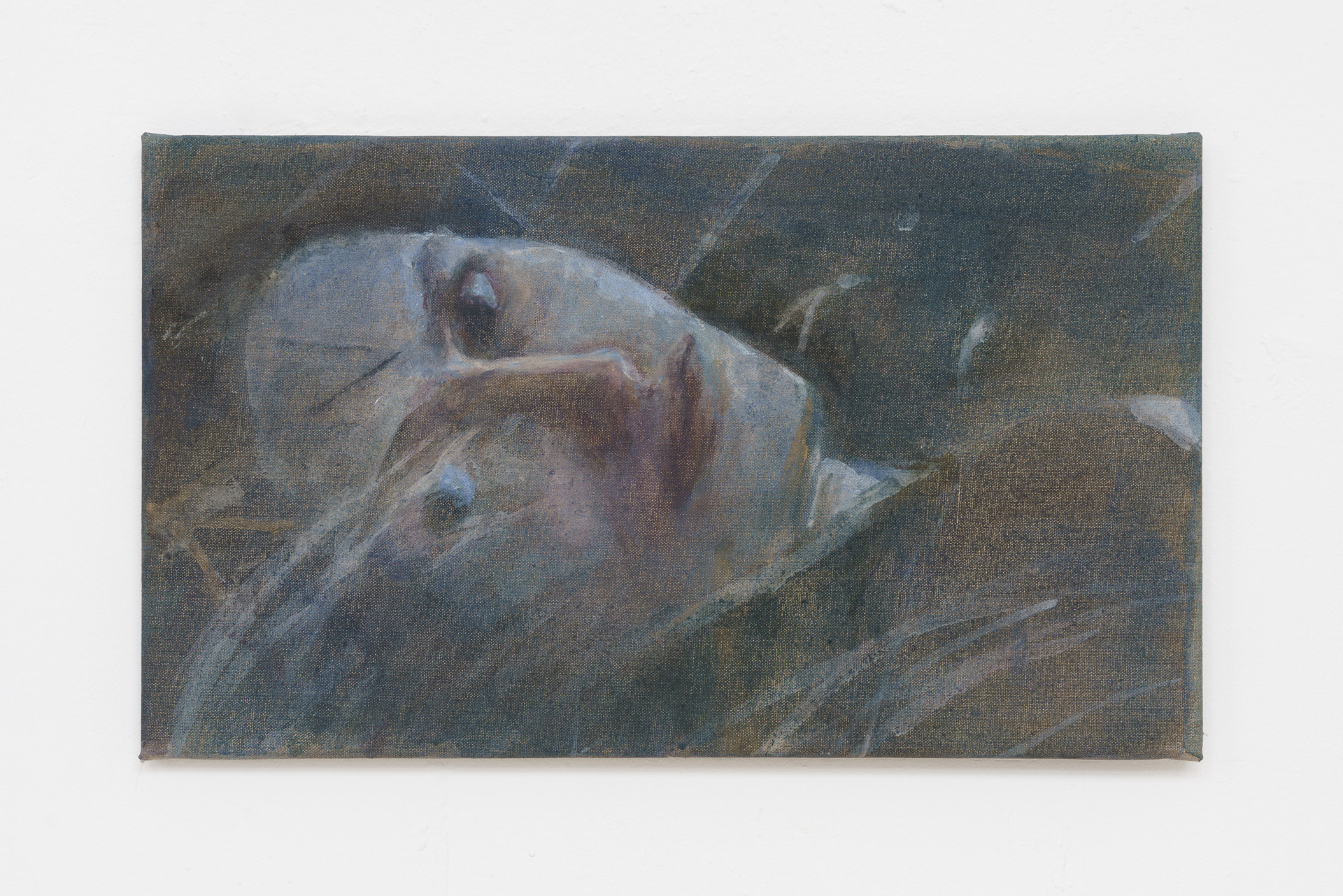
Aria I, 2023, distemper on canvas, 35 x 60 cm / Image by Jana Buch
E.M : Duality recurs in your work: double figures, double compositions on one surface, or two independent surfaces working together. Can you tell us a little about it?
C.L : I found a very fitting observation in the description of a piece of music by Cassandra Miller, "Bel Canto" (2010), which is about the acoustic superimposition of two independent ensembles playing the same piece without a conductor. The effect is described as "layers of melody, creating a sonic depth of field". "Time slows down to allow for an engagement with detail, for a submersion in the sound, and for meditative stillness", it says. Although these are acoustic phenomena, they describe very well what I want from my own pictures when I allow two initially independent image sections to stand next to each other. By bringing the sections together, I want to trigger a viewing process that interweaves the two halves into a whole and integrates the inherent separation of the images above. I find it fascinating that the brain often achieves this in the very first moment of viewing. I would also like to create the depth of a sound field that opens up through the doubling, as described by Miller, through the contradiction of enduring two independent image parts in one whole.
I think this makes it clear that I am not primarily concerned with a narrative that is to be told in a similar way to a comic or something similar, but rather with the possibilities of integrating two excerpts placed next to or on top of each other.
E.M : Sometimes a single motif can be found on the surface or a single character: often truncated, it gives a close-up view of part of the character's face, as if a camera were trying to penetrate the mystery of the interiority. Can you say a few words about this?
C.L : As much as I am interested in the duplication of motifs, I would also like to juxtapose them with something that directs the concentration less on the movement between two sections and more on a point or surface. It often has something of a focussing effect, leading the eye to a detail that is to be emphasised.
E.M: For your first exhibition at the gallery you had chosen to explore the theme of night paintings. The title you chose refers to the night pieces or night tales. And in particularly on those written by E.T.A Hoffmann.
What interests you about this theme and what inspiration does it give you for the paintings you'll be showing soon?
C.L: I came across the title when I was looking through my collection of images, which I use as source material for painting, and discovered some pictures in which the figures seem to emerge from the darkness, a kind of "lost picture" that only appears when the picture is heavily processed and brightened. The mood in the pictures fascinated me and while researching night pictures I found the art-historical term "Nachtstücke" (night pieces) as a term for paintings of nocturnal landscapes as well as the "Nachstücke", the collection of stories by E.T.A. Hoffmann. The first story, "The Sandman", is very well known, at least in Germany. When I read it as a teenager it simultaneously attracted and disturbed me. Particularly memorable for me is the motif of the missing eyes, which already preoccupied me in my dreams as a younger child. For me, being radically deprived of the organs of sight in this context signifies an alienation from one's own perception of reality and possibly also marks the border to going mad, which for me is behind the blurring of reality and nightmarish dream in Hoffmann's stories.
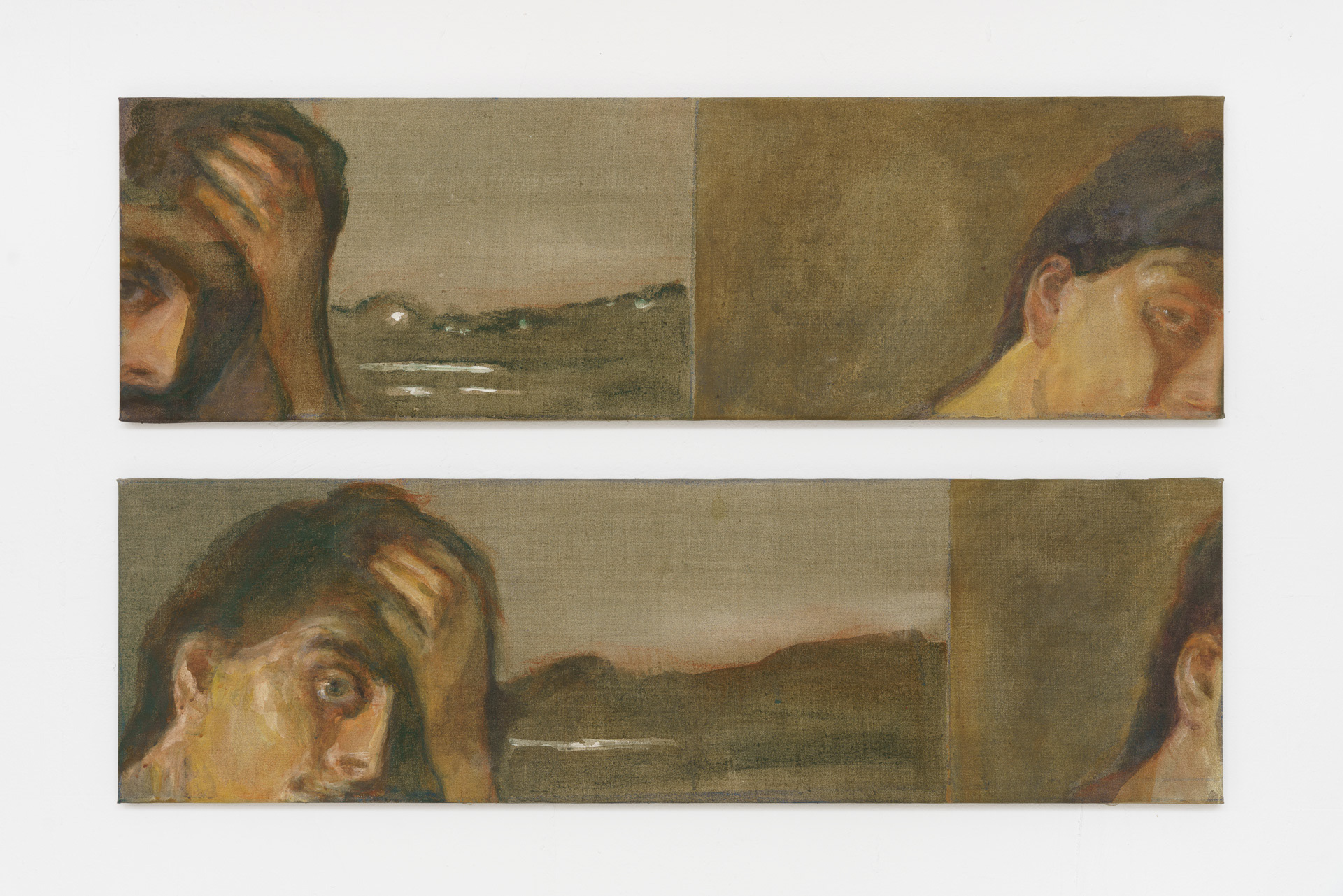
Cécile Lempert, Nachtstück, 2 x 35 x 120 cm, distemper on canvas, 2023
E.M : Can you describe your usual creative process? what inspires your compositions?
C.L : First, I collect visual material from various sources. From this I create a kind of document reminiscent of "mood boards". I also try out different sections, play with duplications and copy parts of the image. Then the most important part of the process for me begins, in which I make drawings of the sections and thus for the first time really I try to grasp them through myself. I need the drawing process to find out whether they are suitable for painting and what really interests me about them.They also help me to determine the deviations from the original motif, the simplifications, the colourfulness, the degree of abstraction. The drawing is therefore at least as important for the transfer to the canvas as the motif.
As I initially fixed the canvas directly to the wall for painting, the way it is later stretched also plays an important role in the exact section.
E.M : What are your main creative influences ?
C.L : I love looking at paintings and frescoes from the Middle Ages and the early and high Renaissance. On the one hand, I am attracted by the precision and accuracy of the elaboration and, on the other, by the strong deviation from "real" forms. I am particularly fascinated by Fra Angelico, whose constructed backgrounds and scenes are often very similar to today's renderings. I also love his frescoes in the San Marco monastery in Florence, which have a wonderful muted colour palette.
However, non-painterly influences also often have a strong influence on me. Recently I have been studying new music, in an amateurish but intense way, especially the Canadian composer Cassandra Miller, who wrote a fantastic viola concerto to a piece by a Greek folkloric viola player from the beginning of the last century. Listening to this piece was the impetus for the exhibition "so fragile a thing", which I had the pleasure of doing this autumn at the Efremidis Gallery in Berlin.
Another very memorable, moving work for me was the film "Sirens", which Nan Goldin showed as part of the Venice Biennale 2022.
There are also literary and lyrical references in my works, including to Ingeborg Bachmann, whose novel Malina has already played an important role in previous paintings and exhibitions. In preparation for this exhibition, I came across two of her poems in the "Nachstücke und Arien" by Hans Werner Henze, which are incorporated into these works.
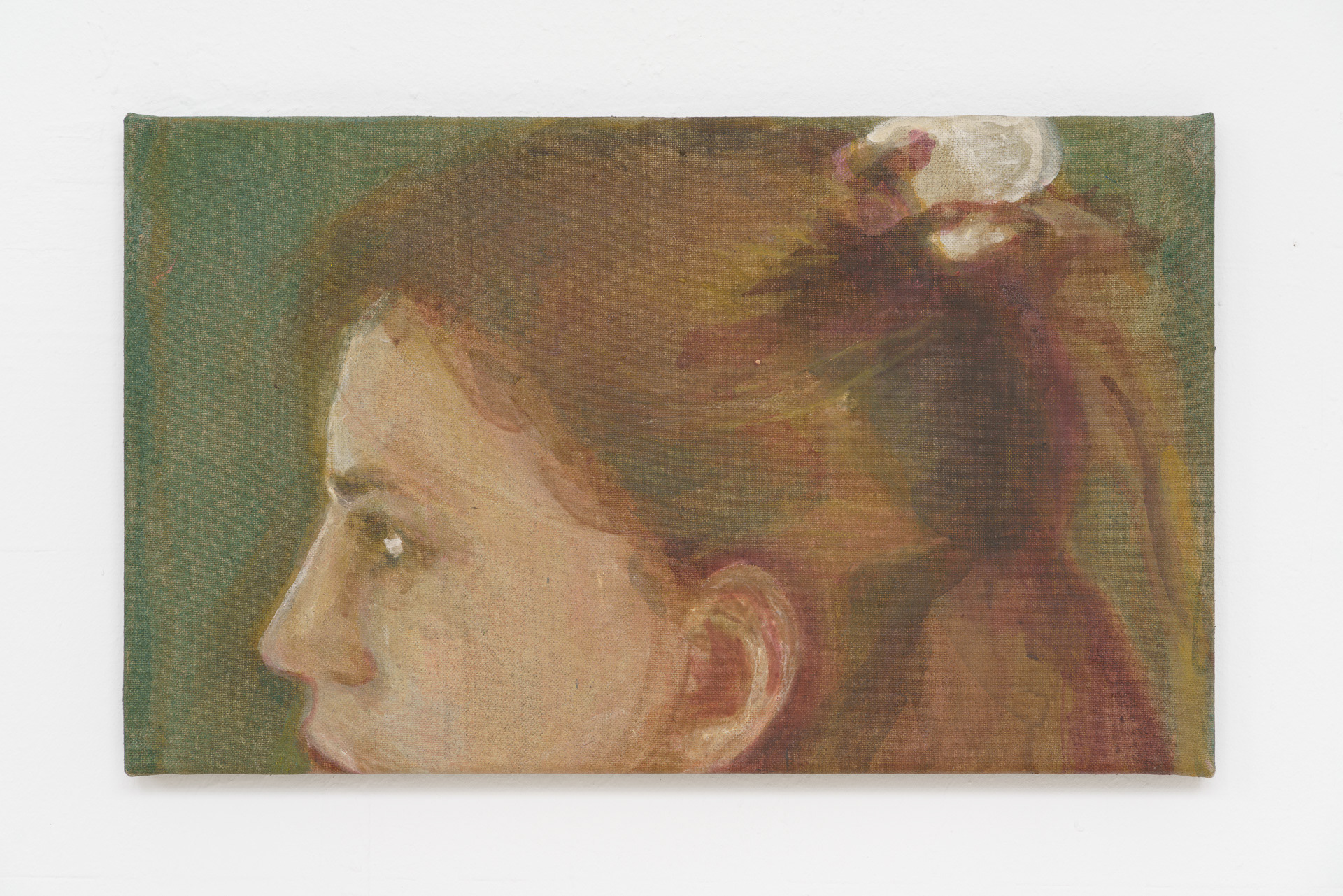
Cécile Lempert, Nachtstück, 2023 Détrempe sur toile 30 x 50 cm

Untitled, 2023 Watercolour on paper 20 x 29,5 cm

Cécile Lempert, Nachtstück, 30 x 40 cm, distemper on canvas, 2023
